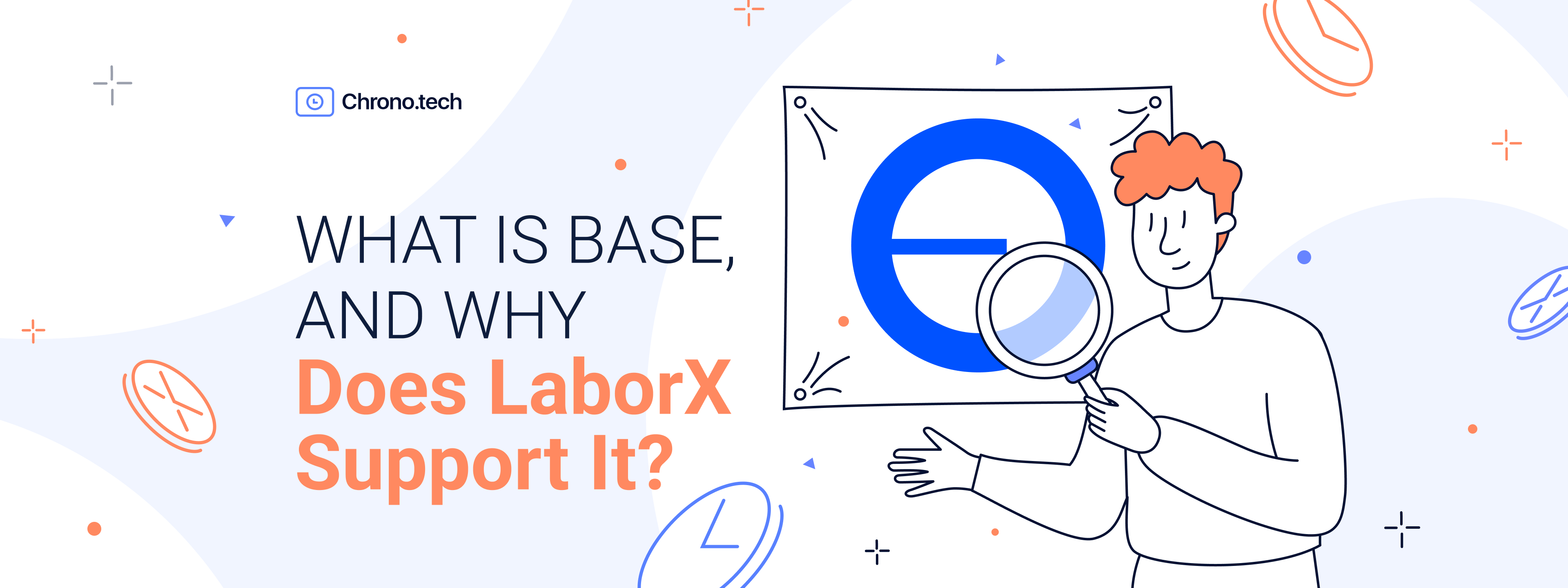Spend any amount of time looking around the crypto world, and you’ll quickly notice there are communities that support one or other blockchains or layer-2 (L2) networks. While there are plenty of people who take an interest in multiple platforms, every chain tends to have a fiercely loyal core of advocates. These community members are platform users, promoters, investors, testers, volunteer developers, node runners – everything a network needs to make it a success.
The blockchain world is composed of these interconnected islands. Any service that seeks to serve the crypto space benefits by tapping into as many of these as possible. For LaborX, that means integrating the most popular chains, enabling users to organise payment using their preferred platforms.
The LaborX Wallet
Look in the Wallet page of the LaborX Dashboard, and you will see no fewer than seven different chain options: Ethereum, BNB Chain, Polygon, Fantom, Arbitrum, Optimism, and Base.
The LaborX team chooses chains based on the features they offer, their popularity, and the number of users they have. The larger their user base, the more potential customers and freelancers LaborX will attract from that community. All of these chains are also EVM-compatible, meaning that LaborX’s logic needs no adaptation from the original Ethereum code to run on them.
One of our most recent additions is Base, a layer-2 platform for Ethereum. This is a great addition to the LaborX ecosystem, for several reasons.
All About Base
Base is a Coinbase-backed L2 solution. Like many other L2s, its aim is to scale Ethereum, providing a platform on which a large number of transactions can be run, quickly and at low cost, while still retaining the security benefits of Ethereum mainnet.
Base is built using Optimistic Rollups: the same technology that the popular L2 Optimism (also supported by LaborX) uses. Optimistic Rollups bundle or ‘roll up’ a large number of transactions, and then post a proof of them back to Ethereum mainnet. They’re called ‘optimistic’ because they initially assume that transactions will be valid. If there is a dispute, a transaction can be challenged and subjected to a full verification process. This approach reduces the computational load on Ethereum mainnet, making transactions significantly faster and cheaper, while maintaining a high level of security.
The Base testnet was launched in February 2023, followed by a developer-friendly launch in July, and finally the official launch of mainnet on 9 August. Right from the outset, it was clear that Base was going to be a huge success, and that there was therefore good reason to add it to LaborX.
Coinbase-Backed
Base was incubated and developed by Coinbase, one of the largest and most trusted crypto exchanges in the world. Coinbase has millions of monthly active users, and is in a strong position to bring those users to Base and drive high levels of activity. Now, nine months after launch, Base has over 20 million unique active wallets (UAW), and supports hundreds of thousands of transactions per day.
Unlike many other L2s, Base does not have a native token. Gas is paid in ETH, just like on Ethereum mainnet – with the difference that fees are around a tenth as much. The Base Bridge can be used to bridge ETH and a number of popular tokens. LaborX supports ETH and USDC payments on Base.
Another benefit is that because Base uses Optimistic rollups, it is compatible with Optimism, another popular L2. Base was actually built in collaboration with Optimism. Optimism’s OP Stack is open source, and was released as a ‘public good’. A percentage of Base’s sequencer fees (the fees paid to nodes which validate transactions and process them) goes to fund the OP Stack project and further the Optimism-based ecosystem.
Finally, Base is more than just built by Coinbase. As you might expect, there are close integrations with the centralised exchange. Base is designed to be the on-chain home for Coinbase users, tokens, and products, so anything that was built by Coinbase is likely also supported on Base. Moreover, these millions of users are exposed to many other decentralised services, and can deploy their assets in new ways that aren’t possible on the CEX.
What Base Brings To LaborX
Under the circumstances, adding support for Base to LaborX was an easy decision. The L2 has been designed using established technology, and contributes to the overall Optimistic rollup ecosystem. It’s backed by one of the largest and best-funded entities in the crypto space, who also bring millions of users and dozens of products and services to the platform. The Coinbase team clearly have a long-term view, and Base is their attempt to capture a significant percentage of the activity that takes place on L2 networks.
The crypto world is fast-moving and there are few certainties. However, it’s clear that Ethereum has established the network effect it needs to remain a core element of the DeFi space, no matter what other smart contract platforms arise. It’s equally clear that L2s are going to be a necessary and valuable part of the Ethereum ecosystem for the foreseeable future. Of the different L2s available, Base has to be one of the strongest and most promising platforms, and is in an excellent position to establish and maintain a lead in the years to come.
Ultimately, of course, LaborX’s position is that it’s best to remain chain-agnostic. While we’re big believers in Ethereum and Base, there are many other promising chains out there. Integrating them into LaborX offers more choices for our users, and allows users from those communities to organise work on LaborX with a minimum of friction and inconvenience.


